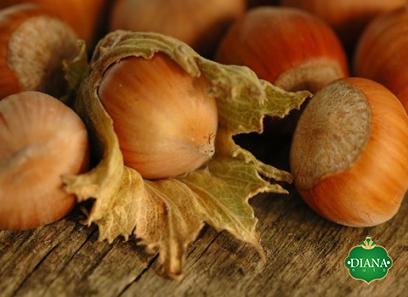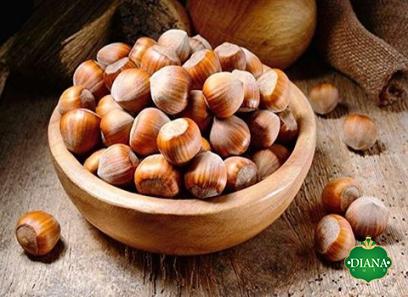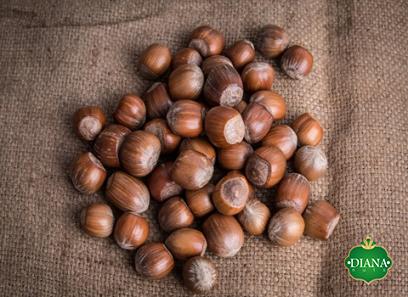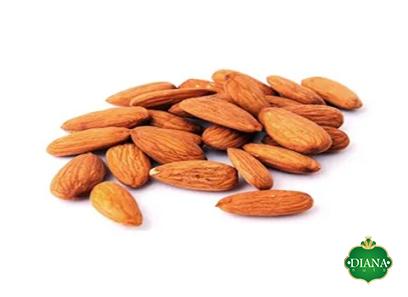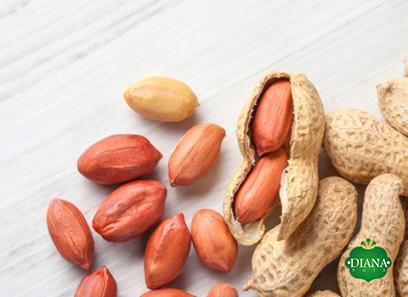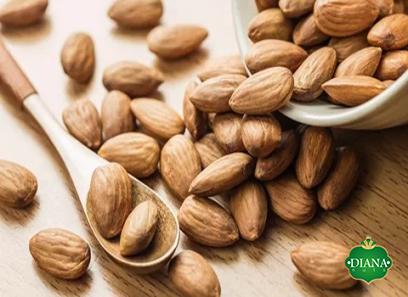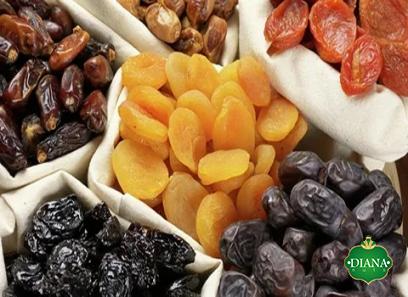In addition to being consumed, the same meaning is hazelnuts are a good source of material that can be used for wattle fencing and basket weaving. This means that in contrast to some of the other nuts, the growing of hazelnuts is a breeze. In addition to this, they have a fast rate of production, which means that you won’t have to wait ten years before you can gather your first harvest. Therefore, if you’ve been searching for a decent source of dietary food to grow in your garden that didn’t accept up a ton of room and that you can relish in just a few decades, the main ingredient is the perfect option for you to consider. You can start enjoying them in just a few years.
Even if you have some control over their growth, hazelnut trees typically reach a height of around 12 feet and a width of approximately 18 feet over time. This indicates that they are of a size that can be easily controlled. It is not required to utilize ladders or any other specialized equipment to gather your crop due to the fact that the nuts are of such a tiny size and quickly fall from the tree.
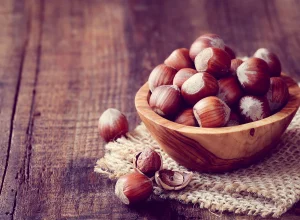
Towards the end of summer and into autumn, the bushes yield tasty nuts. They begin yielding fruit between the ages of three and five years, which is significantly earlier than other kinds of nuts. It takes walnut trees between seven and ten years to start producing nuts, and pecan trees at least ten years. The following is a selection of some of our preferred types.
Hazelnuts can endure shade in hot, dry environments. They require 4 hours of direct sunshine a day to grow. More shade means fewer fruits for the tree.
Meaning of hazelnut
Numerous baked goods benefit from the addition of hazelnuts. When compared to other meals, hazelnuts meaning are synonymous with the sensation of scrumptiousness. They are exquisite when combined with chocolate, but they also provide an amazing flavor as well as a satisfying crunch to savory meals.
The hazelnut, which is the fruit of the hazel tree, has an exterior husk that is hairy and splits apart as the nut ripens. The inside of the nut, which is cream or tan in color, is covered with a paper-thin skin that is brownish red and is enclosed in a smooth shell. Hazelnuts are available in a variety of forms, including shelled, unshelled, with or without their brown skins, chopped, or crushed. They are also often referred to as filberts. When pressed, hazelnuts provide oil with a robust flavor that is somewhat reminiscent of the flavor of walnut oil.

Hazelnuts are often combined with chocolate, but in addition to, these nuts may be processed into milk and flour. Hazelnuts that have been toasted lend a satisfying crunch to practically any meal, whether they are sprinkled over a salad or mixed with vegetables that have been roasted. The versatility of hazelnuts as an ingredient in both sweet and savory meals, such as adding them to hearty pasta dishes, incorporating them into vinaigrette, or baking them into biscotti, is one of the reasons we like this nut. Try your hand at making hazelnut cheesecakes if you’re a fan of Nutella. You can make these tasty delights in just a few minutes by baking a hazelnut-cookie crust and filling it with a creamy Nutella filling. You will only need a few simple ingredients. You may easily include hazelnuts into your dishes, whether searching for something sweet or savory.
Is hazelnut a nut
The term nut refers to a variety of edible nuts that grow on trees, such as almonds, Brazil nuts, cashews, hazelnuts, pecans, pistachios, and walnuts. Hazelnut is one of the nuts that includes many nutritious values.
According to botanists, a nut is a dried fruit that has just one seed inside of it and is encased in a tough shell. Acorns, walnuts, and hazelnuts are all types of nuts that are considered to be real nuts.
The technical concept of a nut is far less restrictive and encompasses a wider variety of edible plant components than the traditional meaning. It is often understood to refer to any edible kernel that is encased in a nutshell.
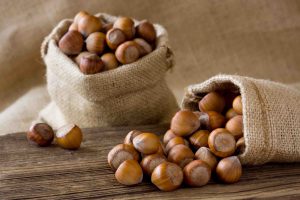
On the other hand, the fruits that develop on trees that produce cashews, almonds, and pistachios are not technically considered to be nuts but are instead categorized as “drupes.” Fruits known as drupes have a fleshy exterior and a hard shell encasing a seed on the inside. Drupes may be identified by their fleshy exterior. This seed is what ends up in our bodies. Walnuts and pecans are difficult to categorize since they have traits with drupes and nuts, but they don’t quite satisfy the requirements for each group. This makes their categorization less than straightforward. Others refer to them as “drupaceous nuts,” while still others call them “nut-like drupes.” It’s interesting to note that mangoes and peaches are both classified as drupes, but in this situation, we just consume the juicy part of the fruit rather than the hard shell and seed that are present on the inside, many of the items that term nuts are seeds.
In spite of their common association with nuts, peanuts are not, they are legumes that are grown in pods similar to those that peas and lentils develop in.
Hazelnut growing
Turkey, Italy, Spain, the United States, and Greece are the primary hazelnut growing nations. Even though hazelnuts are grown in the Former Soviet Union, Iran, Romania, and France, these nations do not make a significant contribution to the international hazelnut trade. The number one producer and exporter of hazelnuts in the world is Turkey. In addition to this, it accounts for around 70 percent of the world’s production and 82 percent of the world’s export correspondingly. Italy comes in second with about 20 percent of the output and 15 percent of the export market share respectively.
The amount of hazelnuts produced across the globe varies from year to year as a direct result of the prevailing weather conditions. In general, global output has grown along with Turkey’s production during the last several years. In-shell production in Turkey typically ranges between 350 and 400 thousand metric tons, in recent years it has increased to as much as before. Italy and Spain, two additional key producing nations, each have an output that ranges between 100 and 125 thousand t and 15 and 25 thousand t respectively. The United States not only fulfills its domestic need for hazelnut kernel via domestic production but also meets the rest of its requirements through imports of hazelnut kernel. Despite this, it has developed into a nation that exports table hazelnuts thanks to an increase in output in recent years.
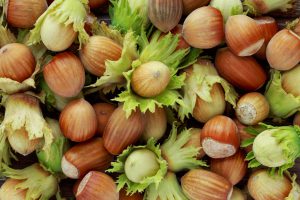
Exports of hazelnuts across the globe fluctuate in response to changes in global output. Approximately 35% of global hazelnut imports come from Germany, making it the world’s largest importer. Although Italy is the world’s second-largest producer of chocolate, it relies heavily on Turkey’s output to satisfy its needs. According to the International Hazelnut Council hazelnut imports from France, Austria, Belgium, and Luxembourg have climbed over the last several years.
Hazelnut uses
The term “hazelnut” refers to a big, reddish-brown nut that is used in a variety of applications within the food industry. This nut uses is perhaps best recognized for its role as the primary component of a well-known chocolate-hazelnut spread.
The taste of baked products such as cookies, cookies, cakes, and tarts is enhanced greatly by the addition of hazelnuts. They are also delicious when combined with savory foods such as seafood, pesto, salads, and even pizza. They provide a distinctive taste to liqueurs and are essential in the production of hazelnut butter, a spread that is analogous to peanut butter.
In addition to being one of the most delectable, nutrient-dense, and well-liked types of nuts, hazelnut kernels are also one of the primary kernels found in four-kernel nuts. Walnut kernels and almonds are other examples of four-kernel nuts. The nutritional value of hazelnuts is also rather high, and they possess a great deal of other useful qualities. People who have a lot of mental activity are encouraged to snack on these tasty nuts since they are abundant in a variety of nutrients, including vitamins, lipids, carbs, proteins, and water. It is one of the plant species that uses all of its components in the food industry, coloring, chocolate making, fuel consumption, disease treatment, used in medicine, and handicrafts. Hazelnut has a warm nature and fruits, tree leaves, tree bark and wood, flowers and hazelnut bark can be used. Hazelnut is one of the plant species that has all of its components. Because of the very high temperatures at which hazelnut shells burn, the vast majority of these shells are put to use in the manufacturing of fuels such as fireplace stumps.
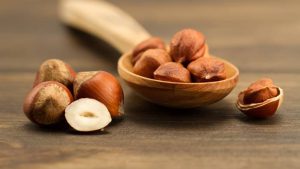
They’re also fantastic for landscaping. They’re attractive, long-lasting, and weed-free. Food, fragrances, and soaps include hazelnut oil.
Hazelnut origin
The origin of the hazelnut may be traced back to Asia Minor. There is mention of this fruit in Chinese texts that date back 5,000 years; these documents come from China. It was the Greeks and the Romans who brought it to Europe, and people have been using it there continuously from ancient times right up to the present day. Many of the cultivated varieties that are used now were acquired in the nineteenth century, which was a time when there was a significant focus on the creation of hybrids as well as the careful selection of species.
Turkey, Italy, Spain, and the United States are the primary nations responsible for production, with global output estimated to be between 700 thousand tons in recent years.
The hazelnut is considered more of a delicacy than an essential food item. Despite this, these nuts with a roundish shape formerly held a position of critical significance. In northern Europe, throughout that period, which lasted from around 8,000 to 3,000 years ago, people lived through the Mesolithic and Bronze ages.
The fact that the European hazel, was one of the first temperate shrubs to colonize the country after the ice sheets retreated is often regarded as the factor that contributed most significantly to its historical success. Around 10,000 years ago, hazel trees began to colonize the island of Ireland. Based on pollen samples, it seems that they reached their greatest extent of distribution around 8,000 years ago. After then, the low-growing hazels would have been overshadowed by the entrance of the broadleaf forest, such as oak and elm, which would have forced them to relocate to a more peripheral habitat.
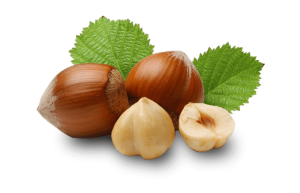
The study measured a 4-meter-tall hazel to gauge its productivity. This plant was in County Down’s hazel coppice and had been picked for years.
Hazelnut varieties
There are several varieties of hazelnuts found all over the globe, especially in Europe, Asia, and the United States of America. A European variant is one of the three types of hazelnuts that the Hybrid Hazelnut Consortium works with. The other types are beaked and American, all of which are native to North America. The purpose of this is to develop a commercial hybrid hazelnut by combining the characteristics that are most desirable in each of these plants.
The hazelnut variety known as Barcelona is the most common one cultivated in the Pacific Northwest. In the state of Oregon alone, Barcelona accounts for more than 60 percent of the total area. Because of its exceptional taste and round form, it is employed in the market for kernels as well as the market for kernels still in their shells. Even after roasting, it is very difficult to entirely remove the coarse, brown, skin-like pellicle that covers Barcelona kernels.

This pellicle is seen on Barcelona kernels. On the other hand, some processors have discovered methods for removing the pellicle. Numerous aspects of Barcelona are not favorable for businesses that generate goods and services.

